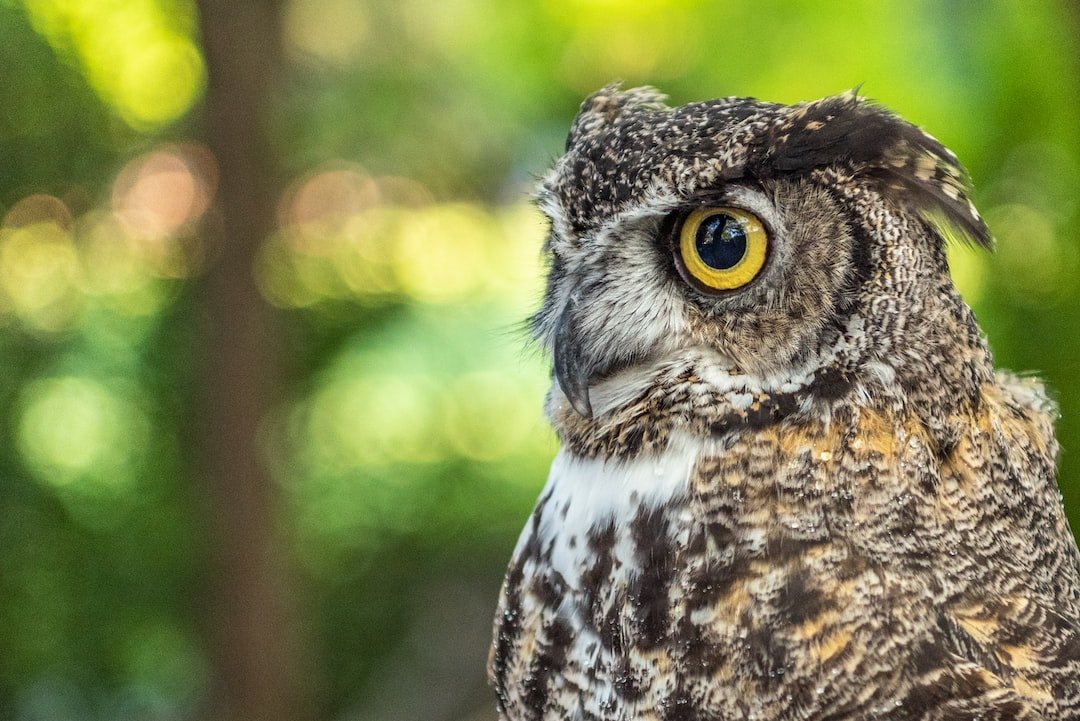Restoring Degraded Owl Habitats: A Step Towards Conservation
Category : Owl conservation efforts | Sub Category : Restoration of degraded owl habitats Posted on 2023-07-07 21:24:53

Restoring Degraded Owl Habitats: A Step Towards Conservation
Introduction:
The majestic beauty and enigmatic behavior of owls have long fascinated the human imagination. Many owl species are facing declining populations due to habitat degradation. The restoration of degraded owl habitats is important for their survival and also important for maintaining the ecological balance. In this post, we will discuss the importance of restoring owl habitats and discuss some effective strategies for making a positive difference.
Owl Habitats have signs of their Significance.
Owl habitats are found in forests, woodlands, and other environments. These habitats give owls a good hunting and roosting environment. owls are left exposed to threats and face severe challenges in finding suitable food sources and suitable areas for breeding when habitats are degraded due to human activities
Owl habitats are being restored.
1 Habitat reclamation and reforestation.
One of the most effective ways to restore degraded owl habitats is through planting trees. The planting of native tree species helps create functional ecosystems and provides owls with suitable nesting sites. Local groups can lead the way in the fight against forest degradation by organizing tree planting drives. It is important to ensure the restoration of a habitat that is compatible with owls' natural preferences.
2 Creating structures.
Artificial owl boxes can be used in instances where natural sites are not available. The boxes should be placed at appropriate heights and locations. Local experts can help determine the best placement techniques for maximizing the chances of owls occupying these structures.
3 Enhancing foraging areas is protecting and enhancing foraging areas.
Restoring degraded owl habitats is more than just providing sites for the owls to nest. It involves enhancing the areas for owls. This can be achieved by protecting existing woodlands, implementing sustainable land management practices, and increasing the availability of prey species. owls can move freely in search of food and mates if there are corridors between habitats.
4 Educating and engaging communities.
Community engagement and education should be included in the restoration of degraded owl habitats. Raising awareness about owls and their habitats can help foster a sense of stewardship. The public can help involve them in owl preservation efforts by conducting workshops, organizing nature walks, and promoting citizen science initiatives.
Conclusion
The preservation of owl habitats is dependent on the restoration of degraded owl habitats. We can make a positive impact on owl preservation by implementing strategies such as reforestation, providing nesting structures, and educating communities. Every action contributes to the larger goal of ensuring a sustainable future for these magnificent creatures. We can restore owl habitats one step at a time.
Leave a Comment:
SEARCH
Recent News
- Zurich, Switzerland is not only known for its picturesque landscapes and vibrant culture but also for its diverse wildlife. While the city may be more commonly associated with its financial sector and luxury shopping, there are some rare and fascinating animals that call Zurich home.
- YouTube Content Creation: Showcasing Rare Animals through Translation
- If you are a nature enthusiast and love learning about rare and exotic animals, there are several YouTube channels dedicated to showcasing these fascinating creatures in their natural habitats. These channels provide a unique opportunity to educate yourself about lesser-known species and the importance of conservation efforts.
- The Importance of Developing Rare Skills Like a Rare Animal in the Workplace
- Women in Politics: Breaking Barriers and Making History
- Warsaw, the capital city of Poland, is not only known for its rich history and beautiful architecture but also for its unique and diverse wildlife. Despite being a bustling urban center, Warsaw is home to some rare and fascinating animals that can be found in various parks, forests, and reserves in and around the city.
- Vietnam is a country known for its rich culture, beautiful landscapes, and delicious cuisine. However, it is also home to a variety of rare and endangered animals that are found nowhere else in the world. In recent years, some Vietnamese businesses and companies have taken initiatives to help protect these precious species and their habitats.
- Vienna, the capital city of Austria, is known for its rich history, stunning architecture, and vibrant cultural scene. But did you know that Vienna is also home to a variety of rare and interesting animals? From exotic species at the Vienna Zoo to elusive wildlife in the surrounding countryside, there are plenty of fascinating creatures to discover in and around this beautiful city.
READ MORE
3 weeks ago Category : owlo

Zurich, Switzerland is not only known for its picturesque landscapes and vibrant culture but also for its diverse wildlife. While the city may be more commonly associated with its financial sector and luxury shopping, there are some rare and fascinating animals that call Zurich home.
Read More →3 weeks ago Category : owlo

YouTube Content Creation: Showcasing Rare Animals through Translation
Read More →3 weeks ago Category : owlo

If you are a nature enthusiast and love learning about rare and exotic animals, there are several YouTube channels dedicated to showcasing these fascinating creatures in their natural habitats. These channels provide a unique opportunity to educate yourself about lesser-known species and the importance of conservation efforts.
Read More →3 weeks ago Category : owlo
